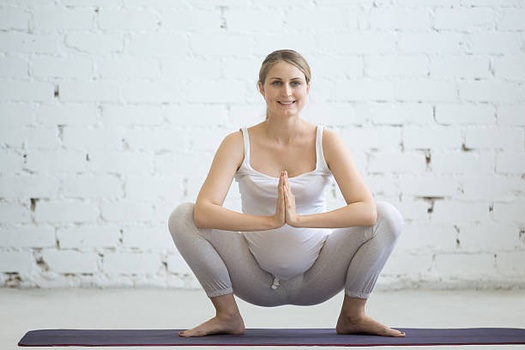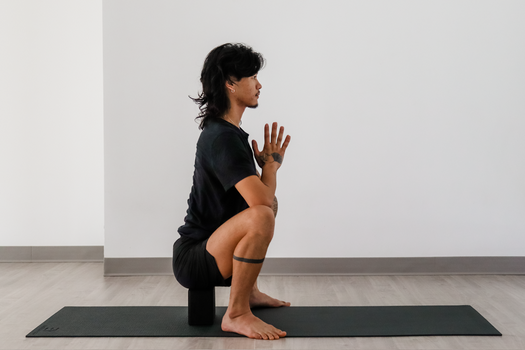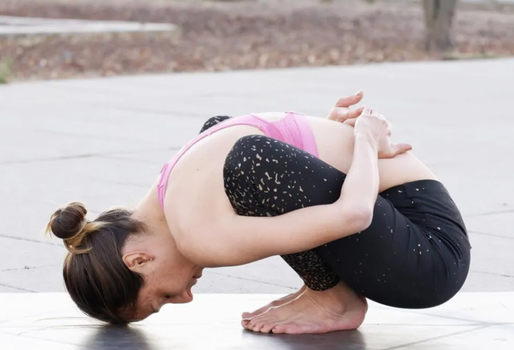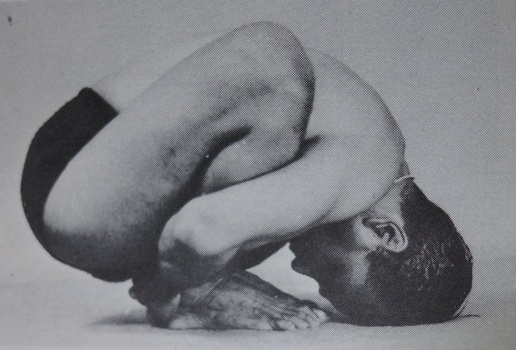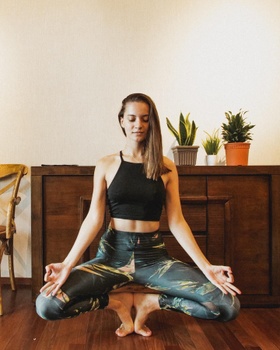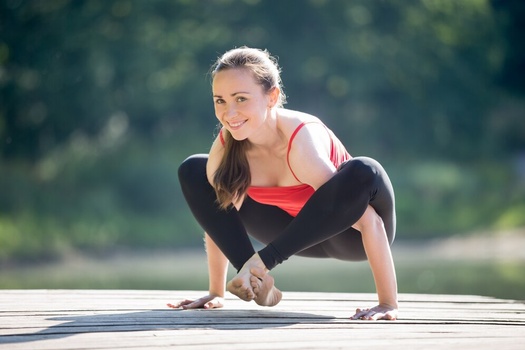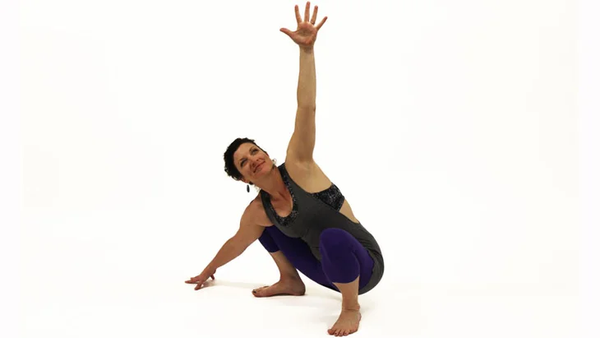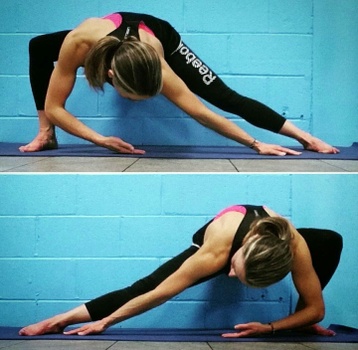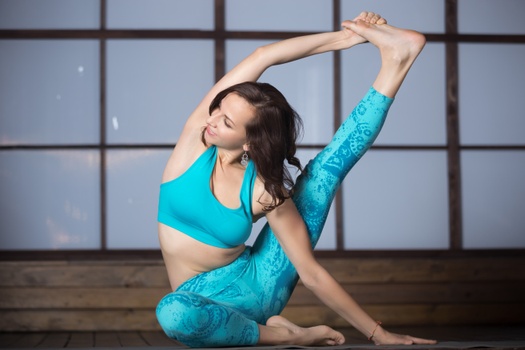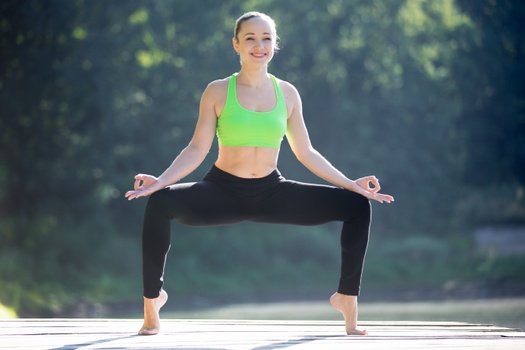Garland pose can be overwhelming for beginners, so we’ve divided the Malasana practice into easy-to-follow steps. Grab your yoga mat and let’s get started.
Part 1 - Preparatory Poses for Malasana
To smoothly execute the grounding Garland pose, all you need to have is a strong spine with flexible legs and pelvic floor. These are a few warm-up poses to get your body ready for the main pose:
1. Baddha Konasana (Bound Angle Pose) - Get into Staff pose, and keep your torso, neck, and head upright. Bend your legs from your knees and keep the soles of your feet together, touching each other.
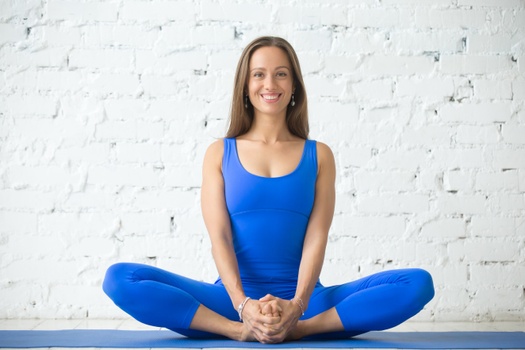
Relax your sit bones into the mat, keeping your knees close to the ground, and focusing on your breath. Hold this pose for 3 to 5 minutes, and let your spine, glutes, and thighs open up.
2. Upavistha Konasana (Wide-Angle Seated Forward Bend) - Open up your inner thighs and hamstrings with a Wide-Angle Seated Forward Bend. Start by sitting in Staff position and open your pelvis by extending your legs at your sides.
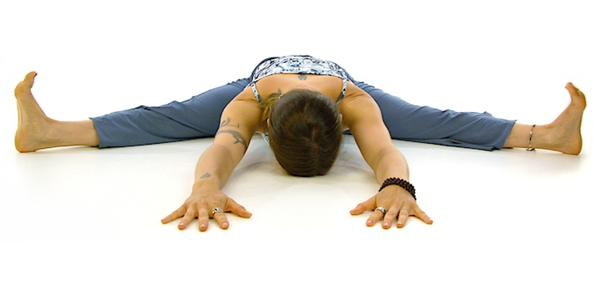
Start to inhale and lift your arms overhead. Now, exhale and bend forward toward the ground. Finally, rest your forehead and torso on the floor and let your lower body open up for a few minutes.
Part 2: Step-by-Step Instructions to Perform Malasana
The following are steps to practice Garland pose or Yogi Squat:
Step 1- Start from a wide-legged Mountain pose and gently sit in a low squat position.
Step 2- Bend your arms from your elbows and form a namaste figure (Anjali Mudra) with your hands.
Step 3- Keep your arms in between the gap of your legs, near your chest.
Step 4- With added resistance from your arms, stretch your legs deeper with pressure applied from your elbows.
Step 5- Keep your glutes close to your ankles, toes pointing to the sides, and roll your shoulders back.
Step 5- Hold the pose for 1 minute and take a few deep breaths in this position.
Step 6- Release the Garland position by getting into a Standing Forward Fold pose to relax your glutes, arms, and spine.
Breath Awareness:
Inhale: While getting low in Yogi Squat position.
Exhale: Before deeply expanding your chest muscles.
Inhale & Exhale: While holding the pose for a prolonged duration.
Performance Duration for Beginners: Hold Malasana for 30 to 60 seconds.
Performance Duration for Advanced: Hold Malasana for 2 to 5 minutes.
Part 3: Things to Keep in Mind
The following are some posture tips for performing Garland pose safely:
Sink into your glutes: Many practitioners mistakenly keep their hips at the level of their knees, but Malasana is a deep squat. Sink closer to the ground in your glutes. For better understanding, remember that you need to level your thighs lower than your knees and hips and closer to the ground.
Don't hold for too long: If your knees are hurting a little after your practice, then do not stay in this pose for too long. Also, if you have any severe knee problems like joint injury or arthritis, it's a wise choice to avoid this pose.
Part 4: Relaxing Poses After Malasana
Below are some relaxing yoga postures to recover from your Yogi Squat practice:
1. Pashchimottanasana (Seated Forward Bend) - From Dandasana, breathe in and bring both arms up overhead. Breathe out, lengthen your arms forward, reach to your feet and hold them with both hands.
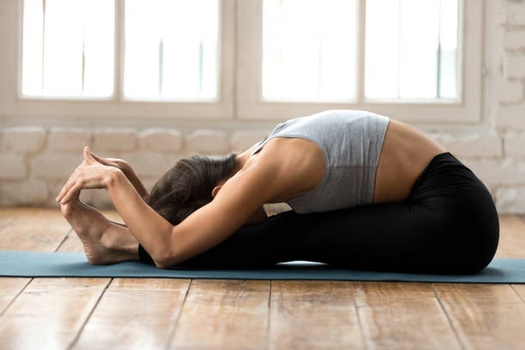
Rest your forehead on your knees and hold this pose for a few minutes until you feel relaxed and rejuvenated in your spine and legs.
2. Supta Baddha Konasana (Reclining Bound Angle Pose) - Lie down on your back and join the soles of your feet together. Place your palms on the yoga mat at your sides, and close your eyes as you start to focus on your breath.
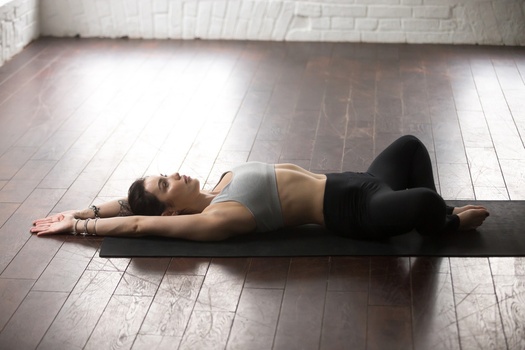
This will bring your spine to its natural shape while simultaneously restoring your knee joints, pelvis, and core muscles.









